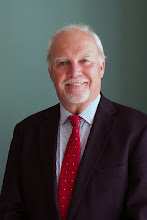I've been away again - Melbourne and Adelaide, to catch up with my family pre-Christmas.
Meanwhile, Max and I have had a bit of feedback on our article about the Super Seasprite helicopter; the absolutely final version of this article, incorporating some of that feedback, is now up on the ADM web site:
http://www.australiandefence.com.au/adm/index.cfm/p/special.reports/
The feedback we've had falls into two categories: additional background information, which supports our central thesis; and requests for clarification to ensure the roles and responsibilities of certain individuals and organisations are presented correctly.
With that in mind, I'm very happy to emphasise to readers that the prime contract for Project Sea 1411 was signed by the old Defence Acquisition & Logistics Organisation (Defence A&L); the Defence Materiel Organisation wasn't created until 2000, by recently-appointed Under Secretary Defence Materiel (USDM) Mick Roche. It's been pointed out that Roche and the DMO inherited the problem and tried to deal with it as best they could; among the lessons they learned from this experience was the risk attached to operating an agglomeration of small fleets of different aircraft. One enduring legacy of Project Sea 1411 has been the ADF's helicopter rationalisation program under Project Air 9000 which will see a fleet of no less than ten separate helicopter types and marks in 2004 (Tiger, Chinook, Black Hawk, Iroquois, Bushranger, Kiowa, Squirrel, Sea King, Seahawk and Super Seasprite) reduced to just five: Tiger, Chinook, MRH90, the new training helicopter to be acquired under Air 9000 Ph.7, and the new maritime helicopter to be acquired under Air 9000 Ph.8. The DMO was one of the strongest advocates of this process, and I'm happy to acknowledge the fact.
Subscribe to:
Post Comments (Atom)


No comments:
Post a Comment